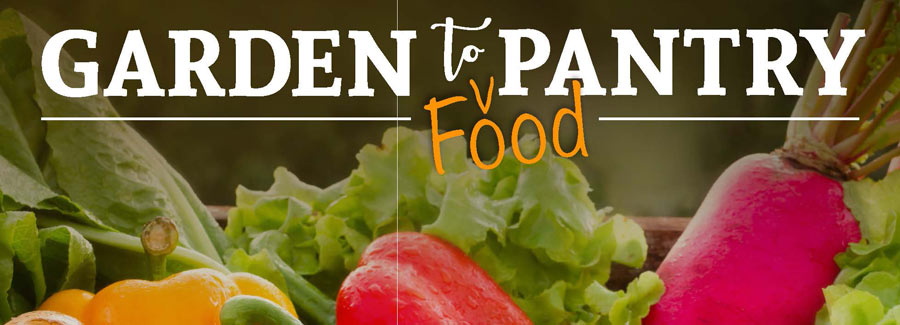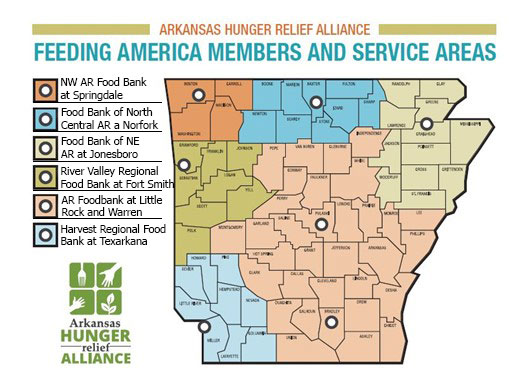
Home Gardener's Guide to Fresh Produce Donations
Home gardening is a great way to provide your household with fresh produce and healthy, safe food options. As we know, not everyone has this opportunity, and food security—especially with regard to fresh produce—is a very real issue here in Arkansas. For those who may have extra fresh produce from their gardens, donating that produce to a local food pantry, or other food-centric organization, is a great way to help those who may not otherwise have access to fresh produce.
Quick Steps for Selecting Produce to Donate
- Donate only fresh, high quality produce from your garden to food pantries
- Use food safety guidelines for handling fruits and vegetables to reduce the risk of foodborne illness
- Keep produce types separate, and store them separately in clean, food-grade containers or bags
- Rinse off soil, grass, and other physical contaminants before donating produce from your garden
- Ensure that donated produce is free from mold, bruising, insects, and spoilage. Only donate produce that you, yourself, would eat
- Only donate whole, un-cut fresh produce from your garden
Call Ahead
Food pantries are generally happy to take food donations, especially of fresh produce. However, it is usually a good idea to call ahead of time to make sure they are able to properly store and distribute fresh produce in a way that keeps the food fresh. If you are donating large quantities of produce, you may want to talk with a pantry manager about making weekly deliveries.
Follow Food Safety Guidelines
Just like you would for food purchased for your family, take steps to ensure that food remains safe from harvest to donation.
- Clean and Rinse: Not only your produce, but your hands as well! When cleaning any fresh produce, begin first with your hands. Wash your hands for at least 20 seconds with soap and water before and after harvesting and rinsing produce. Wash all produce thoroughly under running water: Running cold water will remove physical contaminants like soil from most fresh produce. Other hard-skinned foods like apples or potatoes may require using a produce brush to remove contaminants from any indentations or other imperfections in the skin. The mechanical action of the scrubbing will remove any remaining contaminants. The use of soaps, detergents, or other produce-cleaning agents is not recommended, and is not necessary. After washing, dry produce with a clean cloth towel or paper towel.
- Store Properly: Store perishable fresh fruits and vegetables (strawberries, lettuce, herbs, etc.) in a clean refrigerator at a temperature of 40°F or below. Use a refrigerator thermometer to ensure the temperature is correct.
Why Can I Only Donate Whole Produce?
Donating only whole, un-cut produce is recommended for several reasons:
- It reduces the chance that foodborne illness causing pathogens end up on the produce. Introducing variables like knives, cutting boards, containers, and extra handling can increase the risk of accidentally transferring these pathogens to the food.
- Like the rules pertaining to farmers’ markets in Arkansas, the Arkansas Department of Health considers the cutting, shelling, or other action that changes produce from its whole form as “processing,” which requires a permitted and inspected kitchen.
- Finally, keeping the produce in its whole, un-cut form removes some complications for the food pantry themselves. These complications may involve not knowing what type of produce is being donated, if cut, sliced, or otherwise not donated in its whole, un-cut form. Along the same lines, whole, un-cut produce provides a visual to those pantry clients, or their families, and helps them easily identify the food(s) they are selecting or being given.
Am I Protected from Liability for Food Donations?
Yes! The Bill Emerson Good Samaritan Food Donation Act protects gardeners who donate food to nonprofit organizations for distribution to the general public. You are protected from criminal and civil liability by this federal Act. Under the Act, donors who have donated in good faith are protected should the donated food later cause harm to the recipient. More information can be found here.
Where Can I Donate?
- The Arkansas Food Bank’s Agency Locator Map
- The Arkansas Hunger Relief Alliance’s Food Bank Finder
- Northwest Arkansas Food Bank
- Food Bank of Northeast Arkansas
- Food Bank of North Central Arkansas
- River Valley Regional Food Bank
- Harvest Regional Food Bank
Created by:
Dr. Bryan Mader, Assistant Professor & Nutrition Specialist, University of Arkansas System, Division of Agriculture, Cooperative Extension Service. bmader@uada.edu
